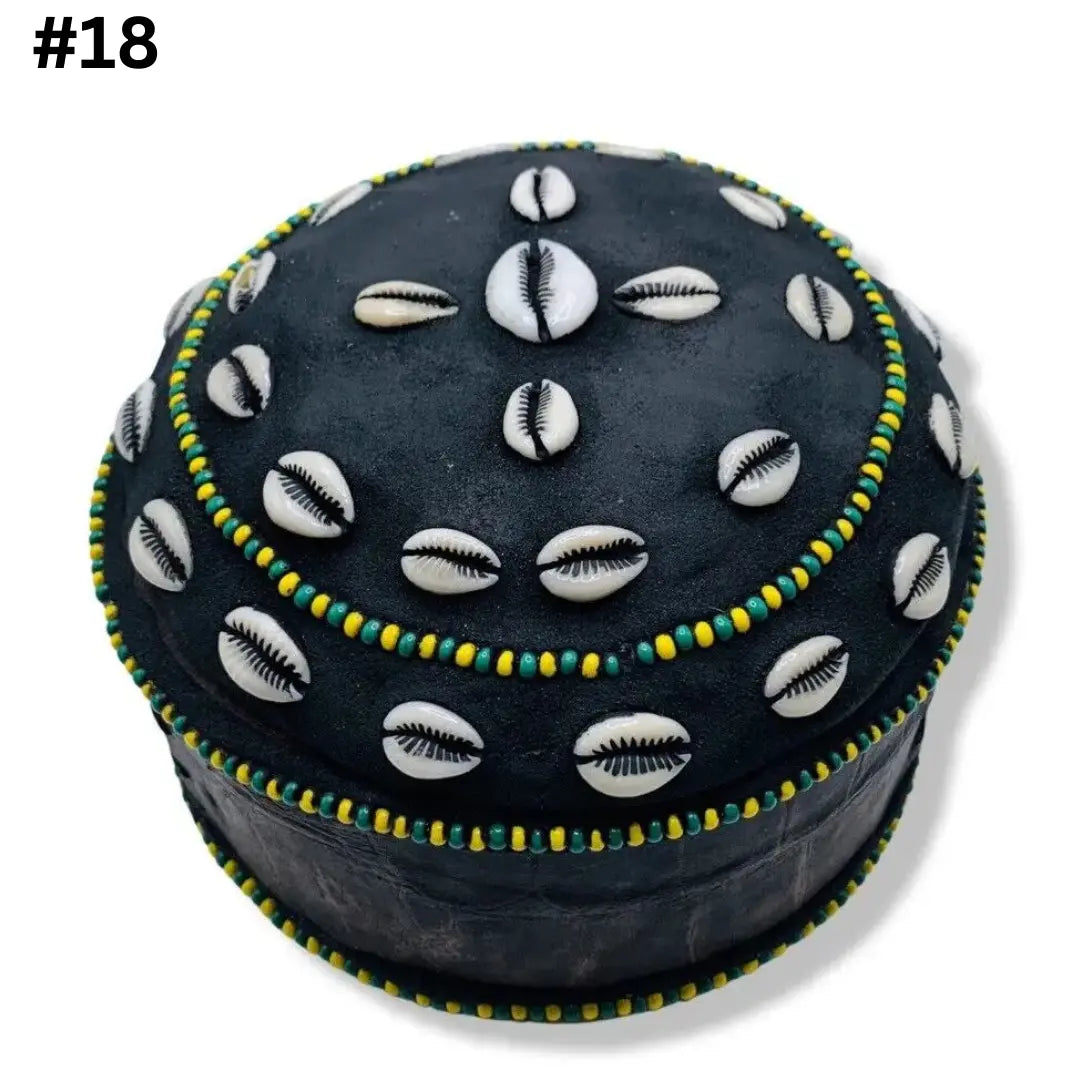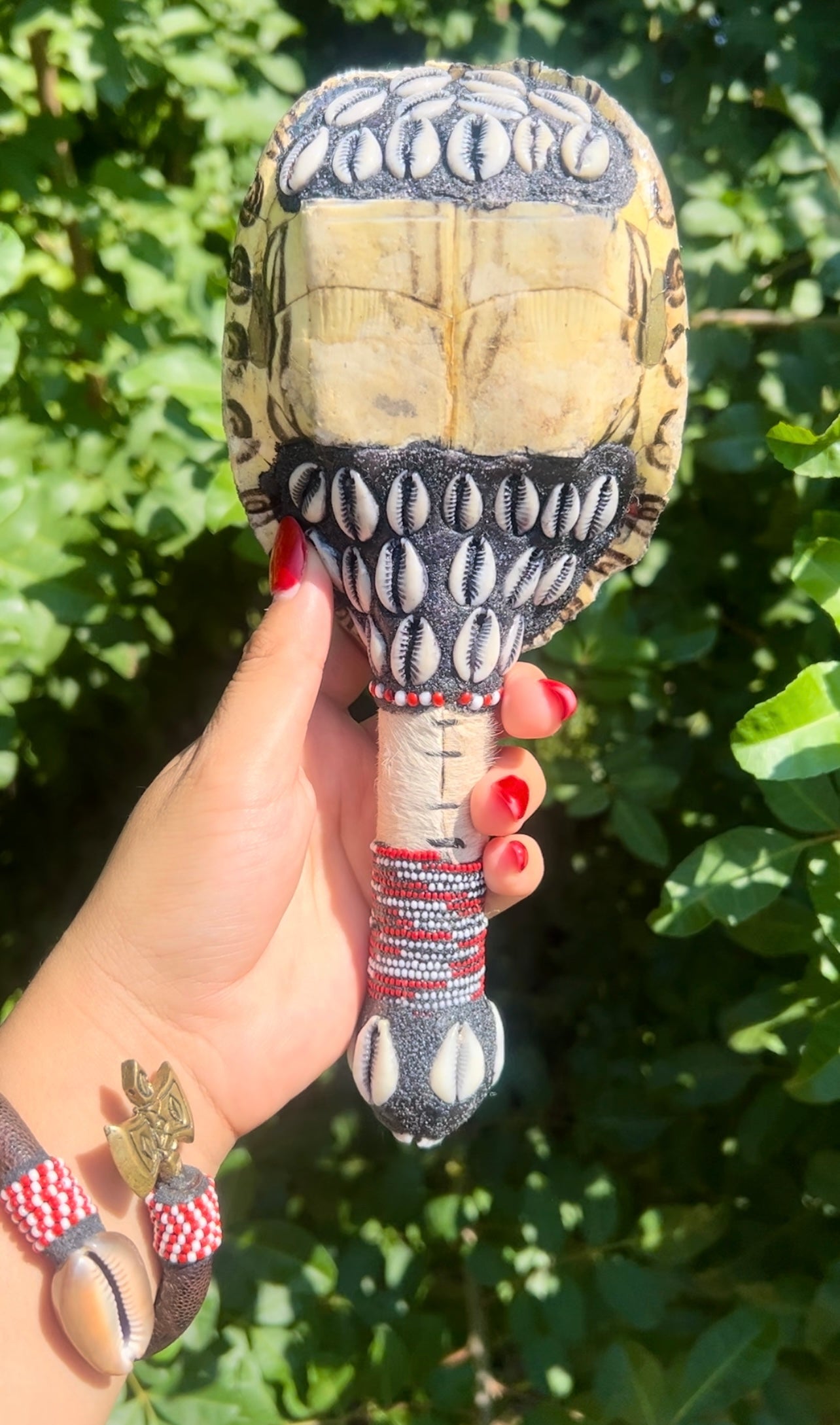Introduction
In the rich tapestry of Yoruba mythology, a spectrum of deities, stories, and traditions offer a window into a spiritual world filled with mysteries and wonders. A significant part of this fascinating tapestry is occupied by two entities, known and revered for generations, Elegua and Eshu. As we embark on this explorative journey, we ask a fundamental question at the heart of many spiritual discussions: what is the difference between Elegua and Eshu?
The Yoruba people, primarily found in southwestern Nigeria and neighboring regions, have bequeathed a rich and intricate mythology that underpins their cultural, spiritual, and societal norms. It is a mythology that sings with the rustle of ancient trees, whispers secrets through the winds, and shares wisdom through the meandering rivers. Within this culture, Elegua and Eshu stand as two prominent figures, entities enveloped in tales and mystique.
To fully appreciate the depth and nuances of these figures, we dive headfirst into examining their origins, symbols, influences, and how they have been perceived through the lens of history and modernity. Our expedition promises not only to unravel the threads of mystery that tie Elegua and Eshu but also to shine a light on the vibrant fabric of Yoruba culture — a rich weave of tradition, spirituality, and art.
As we untangle the intricate world of Yoruba mythology, we aim to provide a comprehensive guide that is both a key to understanding the profound spirituality embedded in this culture and a doorway to a richer understanding of a vibrant, living tradition that breathes life into stories passed down through generations.
Through first-hand insights, historical contexts, and engaging narratives, this guide aims to answer the burning question: What is the difference between Elegua and Eshu, and why does it matter? Let's take the first step in unraveling this enigma by delving into the historical contexts that birthed these fascinating entities.
This section of the article sets the stage for the reader by introducing them to the topic and creating a sense of intrigue. It lays down the purpose of the exploration and gives a glimpse into the rich background of Yoruba mythology.
Historical Context
The fascinating journey to understanding the difference between Elegua and Eshu begins with delving into their historical background deeply rooted in the Yoruba mythology, a rich and vibrant source of knowledge that has echoed throughout centuries. Let's journey back in time to the roots of these entities.
Origins of Elegua and Eshu
Elegua and Eshu hail from the Yoruba people, an ethnic group predominantly residing in southwestern Nigeria, Benin, and Togo. This region, rich with history and culture, serves as the cradle where the narratives of these two entities were birthed and nurtured.
Elegua, known as the divine messenger, finds his origins deeply woven into the fabric of creation tales, depicted as a guardian of doorways and crossroads, a figure guiding the individual paths of humans. His nature is multifaceted, embodying both youthful exuberance and wise old age, a beacon of possibilities steering the journeys of mortals.
On the flip side, we have Eshu, revered as the trickster, a deity whose stories are sprinkled with mischievous and cunning plots, a force that embodies the dynamic and unpredictable nature of life. Eshu is a master of language, a communicator bridging Orisha and humans, often serving as a messenger conveying the desires of the people to the higher entities.
Early References in Historical Texts
As we dig deeper into historical manuscripts and oral traditions, we find early references to Elegua and Eshu, painting them in vibrant hues of rich narratives and folklores. These texts serve as a bridge, connecting the present generation to a time where mythology and reality danced in harmony.
Historical texts and early artworks offer a wealth of insights into the roles and representations of Elegua and Eshu, be it in spiritual rituals or in everyday life scenarios. Elegua, often depicted with a garabato, symbolizes guidance and protection, ushering individuals towards the path of righteousness and wisdom.
In contrast, Eshu, with his vivacious spirit, graces the narratives with vibrant tales filled with wit, humor, and lessons of life, often portrayed with a whimsical smile, a nod to his trickster nature, and a testament to his role in bringing joy and laughter to the world, while also being a bearer of life's hard-earned lessons.
Through a rich amalgamation of stories, songs, and artworks, the Yoruba people have passed down the enigmatic tales of Elegua and Eshu through generations, offering a treasure trove of knowledge and insights, eagerly waiting to be explored by curious minds.
In this section, we’ve begun to explore the rich history and origins of Elegua and Eshu, laying a solid foundation for the subsequent sections where we will delve deeper into their symbolism, stories, and influence in various spheres of life.
Symbolism Attached to Elegua and Eshu
Elegua: The Messenger Deity
As we further unravel the web of tales that define the realm of Yoruba mythology, we find Elegua, often revered as the messenger deity, standing as a beacon of communication between humans and the divine. Enveloped in stories, he often appears as a gatekeeper, guardian of homes, and the opener of roads and opportunities, guiding individuals towards pathways of success and fulfillment. His benevolent nature is a source of comfort and reassurance for many, a testimony to the integral role he plays in the Yoruba pantheon.
Eshu: The Trickster
On the other hand, the vibrant and enigmatic figure of Eshu emerges as a trickster , a deity filled with wit, spontaneity, and a zest for life. Eshu dances through tales with a playful demeanor, embodying both the joy and the chaos that life can offer. Revered and sometimes feared, Eshu stands as a reminder of the unpredictable nature of existence, urging individuals to embrace both the light and dark facets of life, paving the way for a richer, fuller experience of the human journey.
Comparative Analysis
Physical Attributes and Symbols
To truly appreciate the difference between Elegua and Eshu, we dive into an in-depth comparative analysis, beginning with their physical attributes and symbols. Elegua often carries a garabato, a symbol of guidance and protection. He embodies both ends of the age spectrum, representing youth and old age, holding the wisdom of the elderly and the vitality of the young.
In contrast, Eshu is depicted with a vivacious spirit, a symbol of dynamism and unpredictability. His attributes highlight his dual nature, showcasing a deity full of wit and complexity, a true master of disguises navigating the vast sea of human emotions and experiences.
Roles in the Yoruba Pantheon
Understanding the roles that Elegua and Eshu play in the Yoruba pantheon sheds light on their diverse characteristics. Elegua is viewed as a divine messenger, a conduit between the mortal world and the spiritual realm, guiding individuals through life's intricate pathways.
Conversely, Eshu takes on a more playful role, a deity delighting in the chaos of human experiences, a bearer of lessons taught through witty tales and vibrant narratives, showcasing the vibrant spectrum of life's diverse experiences.
Personal Experiences and Stories
Folktales Involving Elegua and Eshu
Personal experiences and stories breathe life into the figures of Elegua and Eshu, as we explore folktales that have been whispered from generation to generation. These tales often portray Elegua as a wise elder, guiding individuals towards righteous paths through tales rich with moral lessons.
Eshu, on the other hand, emerges through stories filled with laughter, joy, and the occasional trick, teaching valuable life lessons through his playful antics, guiding individuals to find joy in the chaos of life, and to embrace life with a playful heart.
Modern-Day Anecdotes
Modern day anecdotes bring Elegua and Eshu into contemporary narratives, showcasing their relevance and influence in today's world. From artistic representations to spiritual practices, Elegua and Eshu continue to influence, inspire and guide individuals in the modern era, a testament to their timeless nature and the rich cultural heritage of the Yoruba people.
This segment of the article explores the symbolism attached to Elegua and Eshu and delves into a comparative analysis highlighting their physical attributes, symbols, and roles in the Yoruba pantheon. We also began exploring personal experiences and stories surrounding these two entities, both in traditional folktales and modern-day anecdotes.
Presence in Devotion and Worship
Elegua: Prayers and Offerings
In the realms of devotion and worship, Elegua holds a significant place. Often regarded as a deity to be approached with reverence and devotion, many individuals and spiritual practitioners offer prayers and offerings to Elegua, seeking guidance, protection, and blessings for a fruitful life. His revered status in the Yoruba pantheon makes him a focal point in various spiritual practices, highlighting his benevolent nature and his role as a guardian and guide.
Eshu: The Divine Messenger
Eshu equally commands respect and adoration in the sphere of devotion and worship. As a divine messenger, he is believed to carry the words of the devout to the gods, serving as a bridge between the mortal and the divine. While his trickster nature is acknowledged, it is also his role as a messenger that brings a deep sense of reverence towards him, acknowledging his vital role in the cosmic dance of life and spirituality.
Influence in Art and Culture
Elegua: Inspirations in Art
Venturing into the art world, one can see the deep impressions Elegua has left. Artists, inspired by his multidimensional nature, have created masterpieces depicting him in various forms — as a guardian of crossroads, as a wise elder, and as a youthful spirit. His attributes have become a rich source for artistic expressions, illustrating the deep respect and admiration he commands in the art community.
Eshu: The Trickster in Literature
Eshu’s influence in art and culture is equally rich and vibrant. His trickster personality has inspired countless stories, plays, and poems, weaving his playful nature into the tapestry of Yoruba literature. Artists often depict Eshu with a whimsical and jovial demeanor, creating artworks that celebrate his vibrant spirit, encouraging viewers to embrace the joyous, unpredictable, and playful side of life.
Global Influence and Contemporary Perspectives
Elegua and Eshu: Beyond Borders
As we trace the paths of Elegua and Eshu globally, we witness their influence transcending beyond the Yoruba culture, touching hearts and inspiring minds globally. Their narratives have traveled across oceans, influencing spiritual practices, art, and culture in various countries, showcasing the universal appeal and the timeless nature of their stories.
Modern Interpretations and Depictions
In the modern age, Elegua and Eshu continue to be subjects of interest, exploration, and reverence. Scholars, artists, and spiritual practitioners globally delve deep into the rich narratives surrounding them, offering new interpretations and perspectives, illustrating their ever-evolving nature, and the deep reservoir of wisdom and inspiration they offer to the modern world.
FAQs
-
What is the role of Elegua in the Yoruba pantheon? Elegua is revered as the messenger deity, a guardian of homes and crossroads, guiding individuals in their life paths, and facilitating communication between humans and the divine.
-
Who is Eshu and what does he represent? Eshu is known as the trickster in Yoruba mythology, representing the dual nature of life — joy and chaos, and encouraging individuals to embrace the vibrant spectrum of life's experiences.
-
How are Elegua and Eshu depicted in art and culture? They have been a rich source of inspiration in art and culture, with Elegua often depicted as a guide and protector, and Eshu showcased as a playful, whimsical deity encouraging joy and spontaneity in life.
-
What modern interpretations exist about Elegua and Eshu? Modern interpretations explore their multidimensional nature, with scholars offering deep insights into their roles in mythology, and artists bringing their narratives to life through various forms of art and literature.
-
How have Elegua and Eshu influenced global spirituality and practices? Their influence transcends borders, inspiring spiritual practices, and enriching art and culture globally, showcasing the universal appeal and the timeless nature of their stories.
-
Are Elegua and Eshu still relevant in today’s world? Yes, they continue to hold relevance, inspiring contemporary art, spiritual practices, and scholarly explorations, offering a rich source of wisdom and inspiration in today's world.
Conclusion
As we draw our exploration to a close, we find ourselves enriched with the deep understanding of the vibrant and diverse narratives surrounding Elegua and Eshu. From their historical context to their modern interpretations, we have traversed a rich landscape of stories, symbolism, and influences that define these two powerful entities in Yoruba mythology.
With a rich tapestry of tales woven through centuries, Elegua and Eshu stand as timeless figures, continuously evolving and inspiring individuals globally, showcasing the rich cultural heritage of the Yoruba people, and encouraging us all to embrace the full spectrum of life’s experiences, with wisdom, joy, and a playful spirit.












